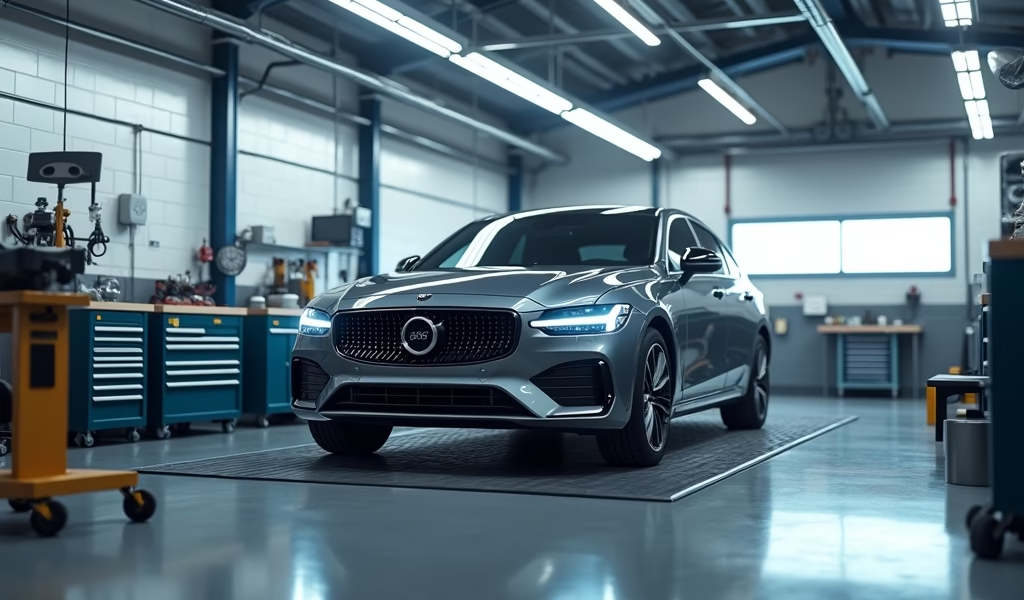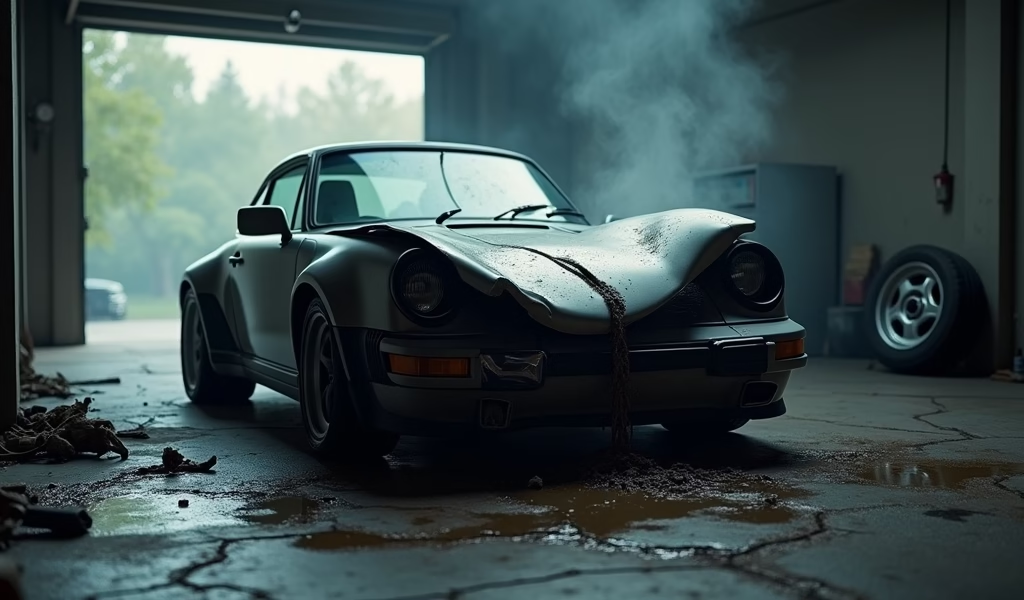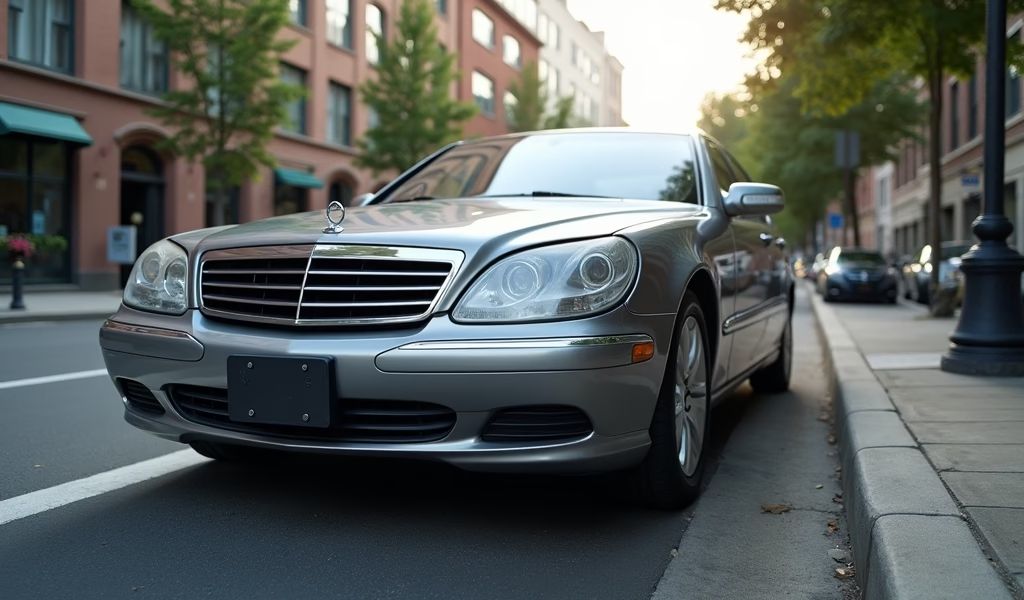Overview
This article emphasizes the legal and safety importance of five essential car maintenance areas: brake systems, tire care, lights and signals, windshield/wiper maintenance, and fluid/engine monitoring. Proper maintenance not only prevents accidents but serves as crucial evidence in determining liability after collisions, with the author drawing on 20 years of experience as both a mechanic and expert witness in auto accident cases.
Table of Contents
- Why Proper Car Maintenance Matters: A Legal Perspective
- The Legal Implications of Neglected Car Maintenance
- Essential Fix #1: Brake System Maintenance – Your Primary Safety System
- Essential Fix #2: Tire Care and Replacement – Your Connection to the Road
- Essential Fix #3: Lights and Signals – Your Vehicle’s Communication System
- Essential Fix #4: Windshield and Wiper Maintenance – Your Vision System
- Essential Fix #5: Fluid Levels and Engine Maintenance – Your Vehicle’s Lifeblood
- Conclusion: Maintenance as Both Protection and Prevention
- Frequently Asked Questions
Why Proper Car Maintenance Matters: A Legal Perspective
I’ve spent 20 years under the hood and in the courtroom as an expert witness, and let me tell you something straight: that warning light you’ve been ignoring might cost you more than just a repair bill. When working with an motor vehicle accident lawyer after a collision, your maintenance history isn’t just paperwork—it’s evidence.
Car accidents happen in heartbeats. One second you’re cruising along, the next you’re exchanging insurance info or worse. While we can’t control other drivers, we can absolutely control our vehicle’s condition.
Think about it: that grinding noise when you brake isn’t just annoying—it’s your car literally screaming for help. And if those worn brakes contribute to an accident? Now we’re talking potential liability, regardless of who hit whom.
The dual importance of maintenance is clear: it keeps you safe on the road and protects you legally if something goes wrong. Let me walk you through the five most critical maintenance items that auto wreck lawyers examine first after an accident.
The Legal Implications of Neglected Car Maintenance
Here’s a scenario I’ve seen dozens of times: A driver gets rear-ended at a stoplight—seemingly cut-and-dried fault on the other driver. But during the investigation, it’s discovered their brake lights weren’t working. Suddenly, liability shifts. The case transforms from straightforward to complicated in an instant.
According to the National Highway Traffic Safety Administration, vehicle-related factors contribute to approximately 2% of all crashes. That might sound small until you realize we’re talking about thousands of preventable accidents yearly.
What many folks don’t realize is that skipping maintenance isn’t just about voiding warranties or future repair costs. It creates a paper trail that can make or break your case after an accident.
When I’m called to consult with a car crash attorney, one of the first things we request are maintenance records. These documents tell a story about you as a vehicle owner. Regular oil changes, tire rotations, and brake inspections paint a picture of responsibility and due diligence—powerful evidence in your favor.
Conversely, years of neglect suggest negligence. And negligence can dramatically affect settlement amounts, liability determinations, and even insurance coverage in some cases.

Essential Fix #1: Brake System Maintenance – Your Primary Safety System
Your brakes aren’t just another component—they’re your primary defense against accidents. I’ve inspected thousands of vehicles after collisions, and brake issues are implicated in a startling number of cases.
Let me be crystal clear: when your brakes talk to you, listen. Here are the warning signs that demand immediate attention:
- Squealing or grinding noises (this is metal-on-metal contact happening in real-time)
- Vibration or pulsation in the brake pedal (often indicating warped rotors)
- Vehicle pulling to one side when braking (possibly a stuck caliper or uneven wear)
- Increased stopping distance (a dangerous situation in emergencies)
- Spongy brake pedal feel (potential fluid or air issues in the system)
- Illuminated brake warning light (your car’s direct way of saying “fix me now”)
Most manufacturers recommend brake inspections every 12,000 miles or annually. Brake fluid typically needs replacement every 2-3 years because—and this surprises many folks—it’s hygroscopic, meaning it absorbs moisture over time. That moisture lowers the fluid’s boiling point, potentially causing brake failure during heavy use.
From a legal standpoint, brake failure due to neglect can transform an auto wreck lawyer’s approach to your case. Courts have repeatedly found drivers with poorly maintained brakes to be negligent. The reasoning is straightforward: if you knowingly drive a vehicle that can’t stop reliably, you’ve created an avoidable hazard.
Essential Fix #2: Tire Care and Replacement – Your Connection to the Road
Let’s talk rubber. Your tires represent your only contact with the road—just four patches each roughly the size of your hand. When you really think about that, proper tire maintenance suddenly seems a lot more important, doesn’t it?
In my career testifying as an expert witness, I’ve seen countless accidents where tire condition played a decisive role in both the crash mechanics and the legal outcome.
Here’s the bare minimum you need to know:
- Check tire pressure monthly and before long trips (always when tires are cold)
- Rotate tires every 5,000-7,500 miles to ensure even wear
- Replace tires when tread depth reaches 2/32 of an inch (the penny test works: if you can see Lincoln’s head, it’s time)
- Inspect for bulges, cuts, or irregular wear patterns regularly
- Replace tires at least every 6-10 years regardless of tread depth (rubber degrades even when not used)
Tire pressure deserves special attention. For every 10°F change in temperature, tire pressure changes by about 1 PSI. That means seasonal changes can significantly affect your tire pressure, creating dangerous under or over-inflation situations.
The National Highway Traffic Safety Administration reports that vehicles with underinflated tires are three times more likely to be involved in a crash related to tire problems. When a lawyer in car accident cases examines the evidence, tire condition often becomes a central factor in determining negligence.
A blowout at highway speed isn’t just terrifying—it’s potentially deadly. And if investigations reveal you were driving on bald or severely underinflated tires, you may face not just civil liability but potentially criminal charges if the accident results in serious injuries.
Essential Fix #3: Lights and Signals – Your Vehicle’s Communication System
Your vehicle’s lighting system is its primary communication tool. It tells other drivers what you’re doing, where you’re going, and when you’re stopping. When these systems fail, miscommunications happen—and on the road, miscommunications lead to collisions.
Common lighting issues I see in my shop daily include:
- Burned-out headlights, taillights, or turn signals
- Foggy or yellowed headlight lenses (reducing light output by up to 80%)
- Misaligned headlights (blinding oncoming traffic or providing inadequate illumination)
- Inconsistent brightness or flickering (indicating electrical issues)
Here’s a simple maintenance routine everyone should follow: Once a month, turn on all exterior lights and walk around your vehicle. Check that everything works as intended. While you’re at it, clean your headlight lenses if they’re looking cloudy. A headlight restoration kit costs about $20 and can dramatically improve nighttime visibility.
From a legal perspective, non-functioning lights create clear liability issues. If someone rear-ends you at night because your taillights weren’t working, you may share fault for the accident. An auto wreck lawyer will immediately investigate lighting functionality in any nighttime collision.
In many jurisdictions, driving with malfunctioning lights isn’t just dangerous—it’s illegal. Those fix-it tickets aren’t just revenue generators; they’re safety measures designed to prevent exactly these types of accidents.

Essential Fix #4: Windshield and Wiper Maintenance – Your Vision System
I can’t tell you how many times I’ve heard “I just drive around the crack” as if limited visibility is no big deal. Let’s be straight: clear visibility isn’t optional—it’s essential. Your windshield isn’t just glass; it’s a structural component that affects crash dynamics and airbag deployment.
Windshield integrity issues to watch for include:
- Chips (which can spread into cracks with temperature changes)
- Cracks (especially those in the driver’s line of sight)
- Pitting (multiple small impacts that scatter light, especially problematic at night or when facing the sun)
- Delamination (separation of the glass layers, appearing as cloudy areas)
Most comprehensive insurance policies cover windshield repair with no deductible because insurers understand that prompt chip repair prevents more costly full replacements. Take advantage of this!
As for wipers, they’re your first line of defense in adverse weather. Replace them every 6-12 months, more frequently if you live in extreme climates. When wiper blades leave streaks, skip, or chatter across the glass, they’re telling you they’re done. Listen.
In accident cases, I’ve seen auto wreck lawyers successfully argue that driving with severely damaged wipers during rainstorms constitutes negligence. If you can’t see properly, you shouldn’t be driving—period. And “I couldn’t see well because my wipers were bad” isn’t a defense; it’s an admission of negligence.
Essential Fix #5: Fluid Levels and Engine Maintenance – Your Vehicle’s Lifeblood
Your vehicle depends on several vital fluids, each serving critical functions. Think of these as your car’s circulatory system—when they’re depleted or contaminated, systems fail, often at the worst possible moments.
The key fluids to monitor include:
- Engine oil – Lubricates moving parts and prevents catastrophic engine failure
- Coolant – Regulates engine temperature and prevents overheating
- Power steering fluid – Enables easy steering (sudden loss can cause unexpected steering difficulty)
- Transmission fluid – Ensures smooth gear shifting and power transfer
- Brake fluid – Transfers force from your foot to the brake pads (absolutely critical for stopping)
Monthly fluid checks take about five minutes but can prevent thousands in repair costs—and potentially save lives. Most fluids have visual indicators or dipsticks that make checking levels straightforward. Your owner’s manual shows exactly where each reservoir or dipstick is located.
When your dashboard lights up like a Christmas tree, don’t ignore it. Those warning lights aren’t suggestions—they’re urgent alerts about systems in distress. Modern vehicles are remarkably good at self-diagnosis, so when they tell you something’s wrong, believe them.
According to a study by CarMD, ignoring the check engine light can decrease fuel efficiency by up to 40% and potentially lead to complete engine failure. Engine failure while driving—particularly at highway speeds—can cause sudden deceleration and loss of power steering, creating dangerous situations that may lead to collisions.
From a legal standpoint, regular maintenance creates a documented history showing your commitment to vehicle safety, which can prove invaluable should questions of negligence arise. An auto wreck lawyer reviewing your case will look for maintenance records as evidence of responsible vehicle ownership.
Conclusion: Maintenance as Both Protection and Prevention
The five essential fixes we’ve covered—brake system maintenance, tire care, lighting system checks, windshield/wiper maintenance, and fluid/engine monitoring—aren’t just mechanical recommendations. They represent your first line of defense against both accidents and liability.
Think about it this way: every time you have your vehicle serviced, you’re not just preventing breakdowns—you’re building a legal shield. Those maintenance records tell a story about you as a vehicle owner, a story that can dramatically influence the outcome of any accident case you might find yourself involved in.
When an auto wreck lawyer examines your case, they’ll look at fault from multiple angles. Was the other driver texting? Did you maintain proper following distance? And critically—was your vehicle in proper working order? That last question can transform a seemingly straightforward case into a complicated liability scenario.
I’ve seen too many people learn this lesson the hard way. Don’t be one of them. Schedule that oil change you’ve been putting off. Replace those wipers that have been streaking for months. Fix that check engine light that’s been your dashboard companion for the past year.
Remember: proper maintenance isn’t just about preventing breakdowns—it’s about protecting yourself legally and, most importantly, keeping yourself and others safe on the road. It’s one of the few aspects of driving that remains completely within your control.
Frequently Asked Questions
How does vehicle maintenance affect my case with an auto wreck lawyer?
Poor maintenance can shift liability toward you, even if the other driver made errors. Documented regular maintenance strengthens your case by demonstrating responsible vehicle ownership.
Can I be held liable if my brakes fail and cause an accident?
Yes, if the brake failure resulted from neglected maintenance. Courts typically consider driving with known brake issues to be negligent behavior.
How often should I have my car professionally inspected?
Most mechanics recommend comprehensive inspections every 12,000 miles or annually. Follow your vehicle’s maintenance schedule in the owner’s manual as a minimum standard.
Will my insurance cover an accident if my car wasn’t properly maintained?
Insurance companies may deny claims if they determine that negligent maintenance directly contributed to the accident. Policy language typically requires you to maintain your vehicle in safe working condition.
What maintenance records should I keep for legal protection?
Keep all service receipts, inspection reports, and repair orders, especially for safety systems like brakes and tires. Digital or physical copies are acceptable as long as they show dates, services performed, and the shop information.


Pingback: Auto Accidents Lawyer: 5 Car Care Hacks - knowsyourcar.com